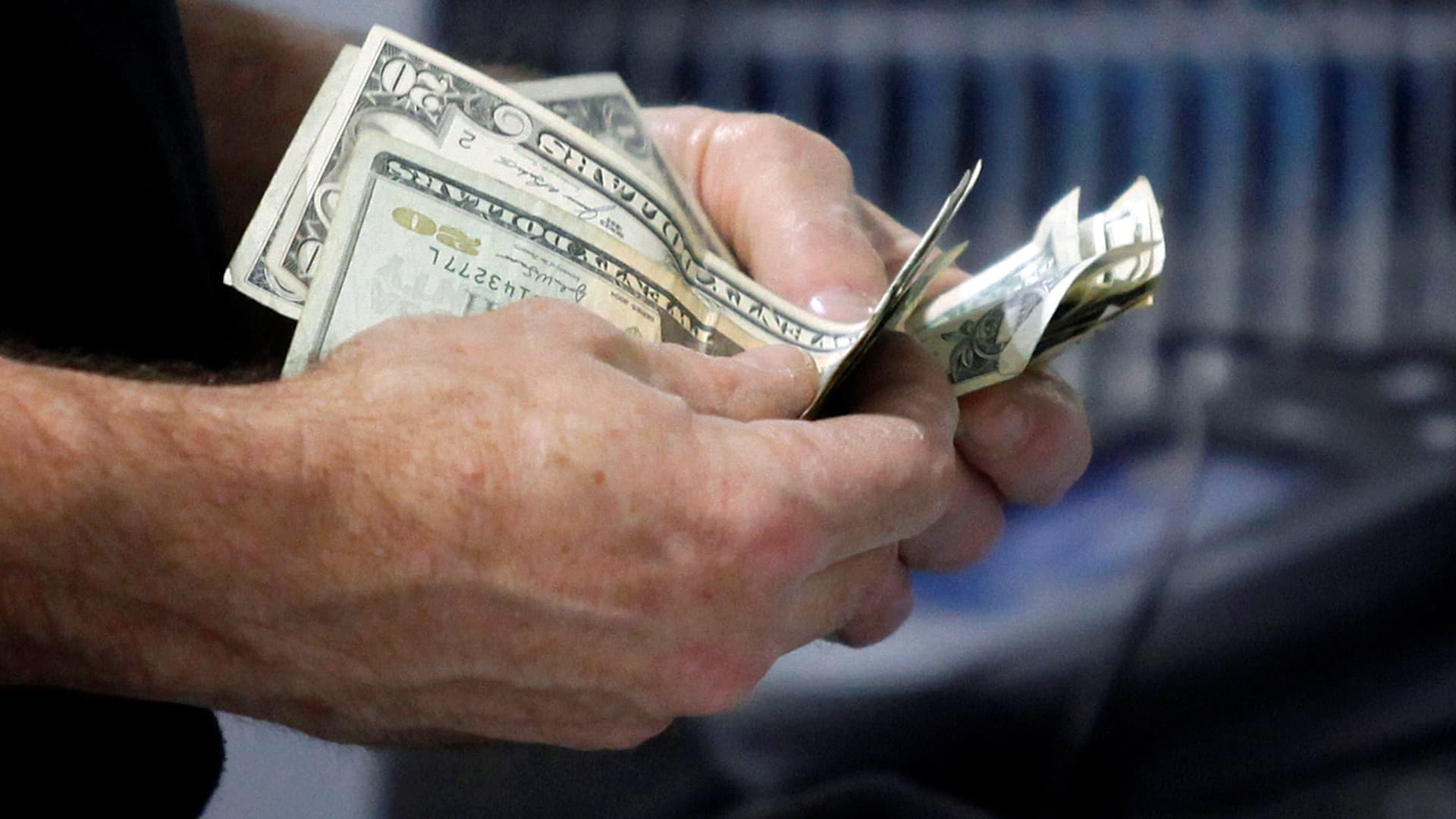
A customer counts his cash at the register while purchasing an item at a Best Buy store in Flushing, New York.
Jessica Rinaldi | Reuters
Inflation held at stubbornly high levels in May, though the monthly increased was slightly less than expected, according to a Commerce Department gauge closely watched by the Federal Reserve.
Core personal consumption expenditures prices rose 4.7% from a year ago, 0.2 percentage points less than the previous month but still around levels last seen in the 1980s. Wall Street had been looking for a reading around 4.8%.
On monthly basis, the measure, which excludes volatile food and energy prices, increased 0.3%, slightly less than the 0.4% Dow Jones estimate.
Headline inflation, however, shot higher, rising 0.6% for the month, much faster than the 0.2% gain in April. That kept year-over-year inflation at 6.3%, the same as in April and down slightly from March’s 6.6%, which was the highest reading since January 1982.
In addition, the report reflected pressures on consumer spending, which accounts for nearly 70% of all economic activity in the U.S.
While personal income rose 0.5% in May, ahead of the 0.4% estimate, income after taxes and other charges, or disposable personal income, declined 0.1% on the month and 3.3% from a year ago. Spending adjusted for inflation fell 0.4%, a sharp drop from the 0.3% gain in April, though it was up 2.1% on a year-over-year basis.
Goods inflation rose 9.6% while services prices were up 4.7%, both up 0.1 percentage points from April.
The personal saving rate edged higher, rising to 5.4%, up 0.2 percentage points from the previous month.
Fed officials are watching the data closely as they seek to control runaway inflation. Central bank policymakers generally watch core inflation more closely because they believe monetary policy is less effective at controlling the ups and downs of gas and grocery prices.
However, Fed Chairman Jerome Powell has said in recent days that he also is watching headline numbers closely as well as gas prices average about $4.86 a gallon.
The consumer price index, which measures a broad range of goods and services and is more closely watched by the public, rose 8.6% in May, its highest level since late 1981.







